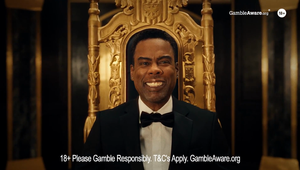
Advertisers Don’t Understand Mainstream - And It’s a Problem

When we consider culture and what makes something part of ‘culture’ in the context of advertising, I think what we often default to is ‘subculture’ - searching for something on the fringes, not yet discovered, not yet mainstream, something new.
But how does this really resonate with the audience, the modern mainstream?
Reach Solutions' recent report on the Aspiration Window has shown that whether subconsciously or consciously, we tend to target ourselves, ABC1, 18-34, that see the world as we do. That means we are at risk of ignoring huge swathes of the population. We are overlooking the modern mainstream.
Whilst this example has been used to death, it is an apt one: Mrs Brown’s Boys caused uproar and much discussion when it beat Fleabag at the NTAs. One Twitter user wrote, “Yet another example of why the British public shouldn’t be allowed to vote for things”. The backlash not only shone a light on our misunderstanding of the mass, but it also reinforced negative stereotypes of the modern mainstream.
Being totally honest, whilst I disagree with the negative commentary regarding the voters, I was confused that what I considered to be regressive, won over a show as progressive as Fleabag.
But I’m not the target audience, and when I say ‘I’ I mean ‘we’ as an industry.
We Are The Elite
Even if we don’t feel it, we are an elite in terms of salary vs. mass mainstream. The average salary in advertising is £47,500, and the average marketing salary ranges from £42,000 to £63,000 depending on the sector. The average personal income in the UK is just over £23,000.
It isn’t just salary either. Our values don’t match up with those of the mass mainstream. We care much more about how we are perceived outwardly:
“To have a high-status job and earn lots of money” - 47% advertising and marketing, vs. 28% of modern mainstream.
“To be unique and stand out from the crowd” - 47% advertising and marketing, vs. 28% modern mainstream.
These differences in income, and in values cast doubt on how we, as an industry can empathise with the rest of the population.
How Can We Start to Move in The Right Direction?
As outsiders to the mainstream, we need to reconsider our approach.
We need to flip our thinking from being the ‘insiders’ to being the ‘outsiders’ and do more to understand and incorporate modern mainstream thinking.
Rising living costs will have a huge impact on purchase behaviour. It’ll be more important than ever to align our products, services, brands with the modern mass and away from our own aspirations as an industry.
The first step is, of course, research into this audience we seemingly know little about. Let’s do what’s right as brands and as an industry and use the resources at our fingertips to really understand who our audience is.
Another step forward is understanding how mass brands not only remain successful, but equally remain part of culture, whether we as an industry like to admit it or not.
Nando’s, as of July 2021, is the market leader in fast casual dining, according to Mintel, Fast Casual Restaurants UK Report 2021. They’ve kept the finger on the pulse to match customer needs through partnerships, digital innovation, offers, and their spice-o-meter that ultimately offers mass-personalisation (two things which tend to be at odds with one another). But most importantly, they have remained accessible and true to their roots. And let’s be honest, whilst we admit it in hush-tones over a cup of tea in the office, most of us love a cheeky Nando’s.
We only really understand the short-term gains of the Greggs and Primark partnership, in terms of selling out. Two brands that are once again widely accessible (more so in the North when it comes to Greggs), as brands in general, snubbed by the elite, but applauded by the public. Apart, they offer affordable clothing, and affordable food. Together they’ve tapped into a hype-culture so often synonymous with a world of luxury, but the offering is reflective of the average salary across the UK.
Where Do We Go From Here?
It’s a real missed opportunity, particularly when, as an industry, we're trying to create famous work. Paul Feldwick discusses fame in his most recent book - whilst arguing that fame is hard to achieve and there is no guarantee that it can be - there’s a framework famous work seems to follow:
1. Appeal- you must create something people are going to like and want
2. Mass reach - you must reach mass audiences
3. Distinction - it needs to stand out amongst the competition
We will very likely fall short of all the above if we overlook the mass mainstream for who they actually are and what they value vs. who we want them to be which is often what we value.
As an agency, we have a clear positioning of ‘Not Normal’ and I think it’s important to decipher exactly what we mean by this. It is not about overlooking the mass mainstream in favour of the ‘different’, the ‘not normal’ audience or worse, focusing our efforts on an audience that’s representative of ourselves. It is not about being weird for the sake of being weird either.
Not Normal is about creating work that is distinct. Entertaining work that will speak to our audiences by tapping into the familiar. A Not Normal approach to advertising for our ‘Normal’ bunch of customers.















